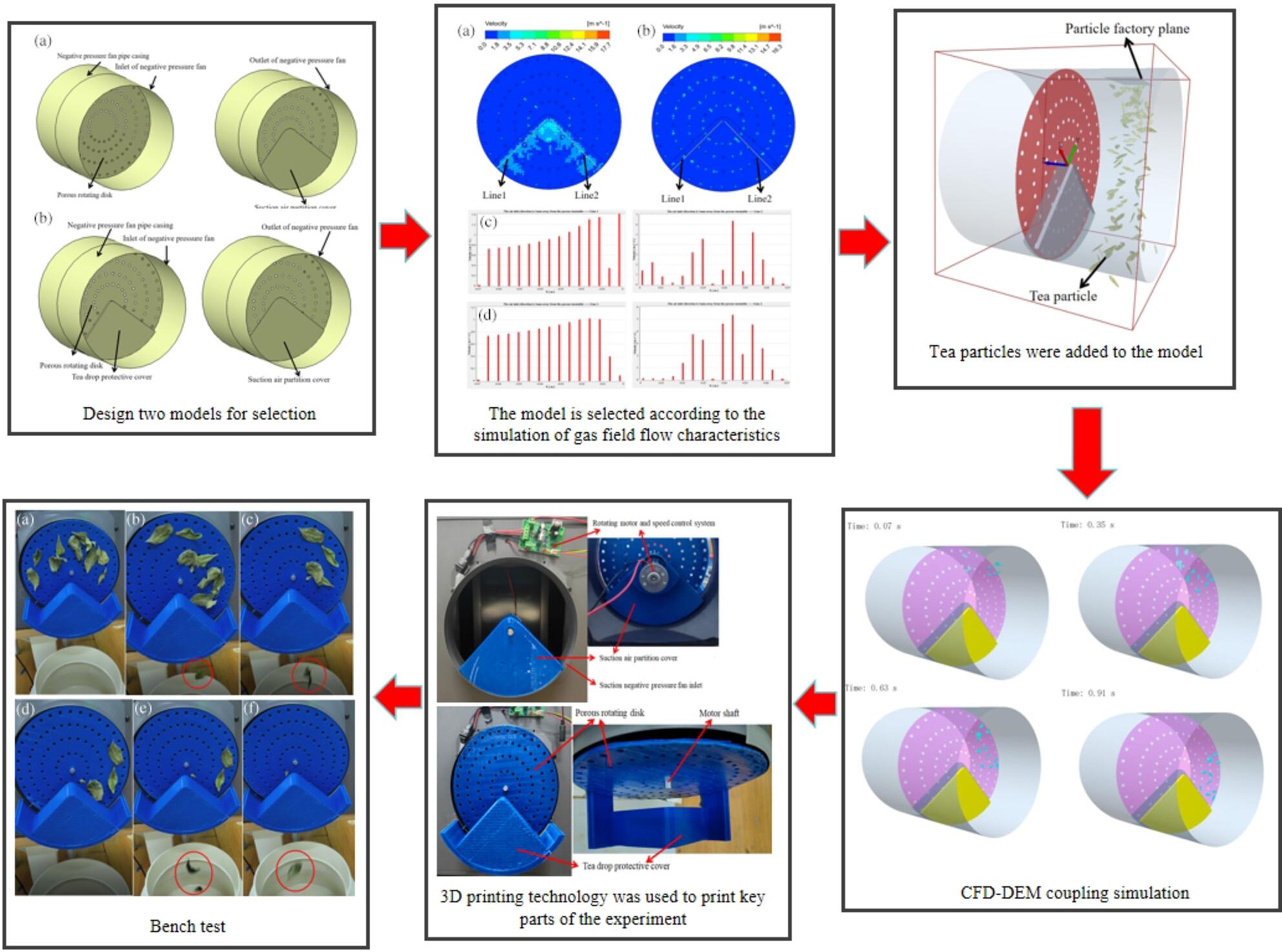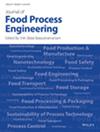Study on simulation and aspirated-air type experiment of fresh tea leaf with air suction based on CFD–DEM coupling
Abstract
In this study, a computational fluid dynamics and discrete element (CFD–DEM) coupling model for sorting fresh tea leaves by aspirated-air type was established, an experimental study of adsorption on bench was carried out, and computational fluid dynamics (fluent) was used to analyze the flow characteristics of two kinds of air-suction tea leaf models, The coupling model of CFD–DEM is established, the motion process of fresh tea leaves from being adsorbed by a porous turntable to moving and falling with the turntable was simulated, 3D printing technology was used to print the key parts of the air suction tea leaf sorting equipment, and the porous turntable adsorption test of air suction tea leaf sorting was carried out. The results show that the model with the falling guard device has no airflow at the hole of the porous turntable, and the gas field flow characteristics are stable, which can ensure the smooth falling of fresh tea leaves; The results of the bench test for the separation of fresh tea leaves by air suction are the same as those simulated by the established CFD–DEM coupling model, which indicates that the establishment of the CFD–DEM coupling model and the simulation parameters are reasonable, and the coupling model lays a foundation for the later optimization and design of the multi-scale air suction separation mechanism for tea particles.
Practical applications
This research is applied to the field of food engineering and sorting of fresh tea leaves. This research innovatively proposes the principle of air-suction sorting of fresh tea leaves. The air sucked in by negative pressure can carry out the next operation and save energy better. In this study, a CFD–DEM coupling model for air-suction separation of fresh tea leaves was established. The key components of air-suction separation equipment were printed using 3D printing technology, and the test results were the same as the simulation results.


 求助内容:
求助内容: 应助结果提醒方式:
应助结果提醒方式:


